From Scholars to Storytellers
Students can tell your district’s story like no one else can. So why not give them a larger role in your school marketing and communications?


From Scholars to Storytellers
Why you should get students involved in school comms and marketing
In August of this year, Arcadia Unified School District in California posted a video to their YouTube channel entitled “How an Orchestra Changed My Life.” It’s clear from the moment you press play that this is no ordinary promotional video. It’s a short documentary, and Lucas, a 2024 Arcadia graduate, made it himself.
What follows is an intimate portrait of Lucas’ four years in high school orchestra. As his voiceover explains, he almost quit orchestra in his freshman year—but then, he found his people. In a racing montage of short vlog clips, Lucas and his friends goof off at Disneyland, scream-sing “We are the Champions” on a bus after winning a national competition and stand on the beach together, staring out at the ocean.
“I never really felt comfortable being myself—honestly, I was embarrassed to be myself,” Lucas says as the video comes to a close. “But you guys let me be that person, my true self. You’ve let me grow far beyond what I thought was possible, and I can never thank you enough.”
A perfect, polished video from the district’s perspective could tell a viewer a lot about Arcadia High School’s orchestra program. But nothing could capture the joy, camaraderie and community those orchestra students experience like Lucas’ short film does. It’s not professionally produced, but it’s beautifully real—and it makes the audience want to know more.
Students experience your district differently than any other stakeholders, and they can tell your story like no one else can. Their perspectives offer an authentic window into the day-to-day workings of your schools, and your audiences—from fellow students to parents to community members—crave that authenticity. So why wouldn’t you give students a larger role in your district’s communications and marketing?
Maybe you have a few concerns about giving students such a big responsibility, or maybe you just don’t know how to get started. Wherever you fall, districts across the country are doing this and doing it well. Let’s take a look at what happens when you empower students to be school communicators.
You provide valuable learning opportunities.
Perhaps the most obvious reason to involve students in your communications and marketing is the chance for them to learn. (After all, that’s why they’re in school in the first place.) That’s exactly the idea behind the fifth grade news broadcast at New York’s Copenhagen Central School. Part of Copenhagen’s K-5 STEM program, this weekly project gives students technical skills that could blossom into career interests—and soft skills that will last a lifetime.
Within Copenhagen’s elaborate makerspace, there’s a flexible broadcast studio, the brainchild of district technology director Adam Zehr. With a green screen, a few cameras and a teleprompter, it’s completely portable—and affordable. “I could probably put the studio together and do everything we’re doing for $2,500,” says Zehr. “There’s no reason every school couldn’t have a studio like this.”
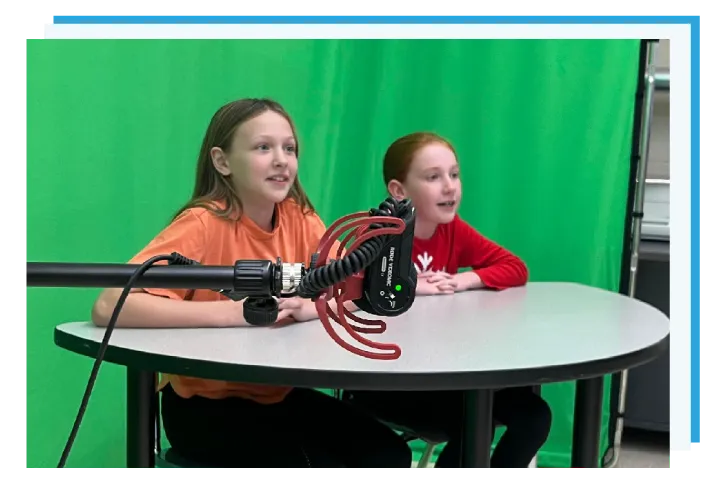
But it’s not the studio itself that’s special—it’s how students use it. Each week, four fifth graders take their turns as junior journalists: writing the script, working the equipment and acting as amateur news anchors. According to Zehr, each broadcast follows a basic template. “We always do an intro, the lunch menu and the weather,” he says. Students can then build on that template. “They’ll get the lunch menu from the cafeteria manager, for example, and they have to key all that into the slides,” says Zehr.
Once it’s time to film, a couple of students get in front of the camera, while the others stay behind the scenes. No matter which role they take, they have a safe place to explore, try and even fail. “Some students really struggle with reading,” says Zehr. “But because we pre-tape it and edit it, there’s not as much pressure.” And since the filming equipment is relatively inexpensive, kids working the cameras can get hands-on without worrying about messing something up. “If you have a studio with expensive equipment, kids might be more apprehensive to mess around with it,” he says. “With ours, you really can’t hurt a thing.”
Zehr’s students also have the freedom to explore what they’d like to cover for the show’s special feature segment. They often conduct real interviews on camera, with everyone from teachers to a local newscaster to the district’s therapy dog. One student even interviewed his own dad about their family’s maple syrup production company. “He came up with that himself, and it was a very popular segment,” says Zehr.
Whether they’re strengthening their reading skills or learning to switch video inputs, Copenhagen’s newscasters are also gaining something crucial: self-confidence. “We had a student last year who was a little apprehensive and shy to be on camera,” says Zehr. “But he got a lot of compliments in the hallway about how great a job he was doing, and it really opened him up. And that’s the whole goal of the program—to build that confidence.”
You multiply the capacity of your comms team.
Learning is perhaps the best reason to platform your students as school communicators. However, that’s not the only benefit this strategy can provide. At Arcadia Unified, students are learning to be social media managers, magazine editors, videographers and more—all while increasing the reach of their district’s two-person communications team.
Each year, around 25 high school students take part in Arcadia Unified’s Digital Communications Internship (DCI). After applying, interviewing and working through a 30-day probation period, they become a crucial part of the district’s content creation machine. DCI students take photos and video at district events, edit their footage into short videos and—perhaps most strikingly—run Arcadia Unified’s social media accounts themselves.
“Every time I say that, people gasp,” says Chief Communications Officer Ryan Foran. “And if you had told me when I first started that I would someday let 16-year-olds post directly to our social media, I wouldn’t have believed you. But once you work with the students—teach them and train them and trust them—it’s not an issue. We’ve been allowing them to post for five or six years now, and we’ve never had a single problem.”
But why let students post directly to your Instagram feed? In short, it saves tons of time. “Say one of our interns takes 50 or 60 photos at a football game or a concert,” says Foran. “Then, at 9 o’clock at night, they send me those pictures—and I have to download them, upload them to Facebook, write captions and so on. If you multiply that by five to ten events a week, that’s so much time, and I still have everything else to do.” Allowing trusted, vetted students to post directly to the district’s social media removes that bottleneck and saves Foran time. “Instead of giving them a fish, we give them a fishing pole and teach them to do it themselves,” he says.
Social media management is far from the only opportunity for DCI students; they can specialize in just about any communications discipline, from news writing to podcasting to graphic design. And as opportunities for students expand, so do the communications offerings Arcadia Unified provides for its audiences. For example, in the 2022-23 school year, the district launched its award-winning Imagine Magazine, chock-full of student-produced stories and photos for the whole community to see. At 50 pages, it’s an impressive feat—one that wouldn’t be possible without DCI. “Without the interns, we couldn’t do this,” says Foran. “We help them with it and oversee it, but if we didn’t have the interns leading it, there’s no way it could get done.”
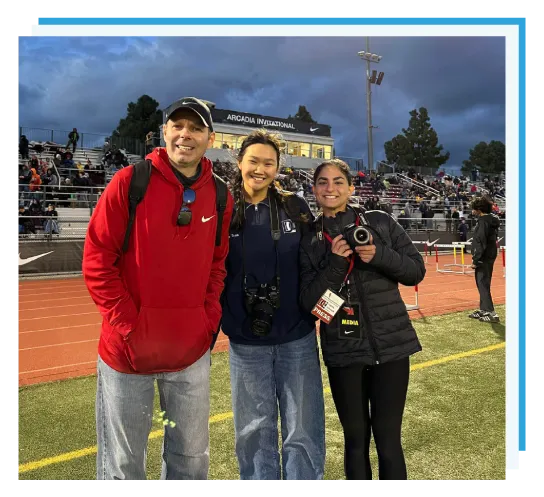
In fact, it would be nearly impossible for just two people—Foran and Public Information Officer Lauren Cienfuegos—to cover all of Arcadia Unified’s stories on their own. But DCI multiplies their capacity ten times over. In past years, the public information office—including interns—has been able to cover more than 200 events in just 184 school days. “We’re able to showcase and highlight our students and staff at a level we couldn’t even come close to on our own,” says Foran.
So if you’re a school communicator feeling yourself stretched thin, why not empower students to share the load? “Students are just an amazing resource,” says Foran. “They will get a lot out of it, and you will get a lot out of it. It’s a win-win.”
Want help creating your own district communications internship? Check out the National Communications Internship Collab here.
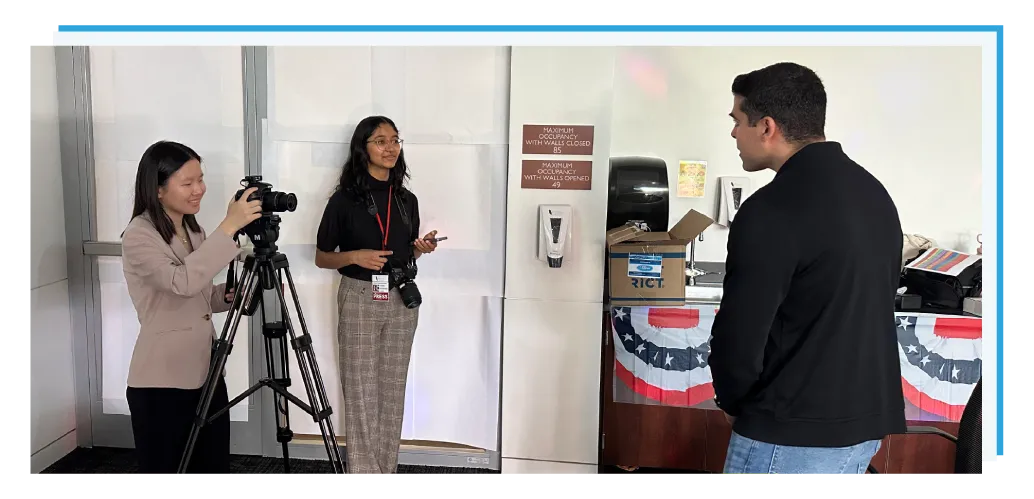
You prove your value to the community.
An in-person experience can be a great way to connect with your community and show them just how valuable your district is. But can students handle the responsibility of running a huge event? If you ask Durango School District 9-R in Colorado, the answer is yes.
On January 24, 2024, the district was celebrating. Four years earlier, the community had approved a $90 million bond package, part of which would pay for the district’s new career and technical education center. Now the Impact Career Innovation Center was finally welcoming the community in for a grand opening. But this was no ordinary open house. In every aspect of the event—from planning to marketing to catering and more—students ran the show.
Why put students in charge of such a high-stakes event? “Our district truly believes in promoting student voice,” says Public Information Officer Karla Sluis. “Students often feel like their education is happening to them instead of for them—they want their education to be relevant. They don’t want to leave high school thinking, I’m not going to use any of that.” The Impact grand opening was an incredible opportunity for students to develop and exercise their project management skills.
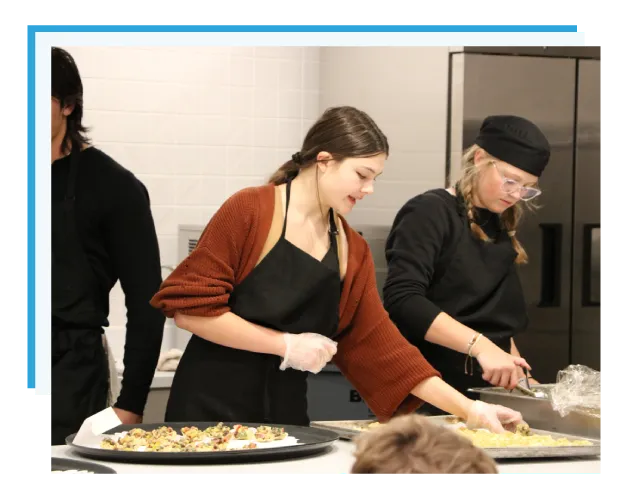
But giving students the reins was also a chance for Durango to show their community exactly what these kids were capable of. “CTE kids are used to presenting on their topics. They’re passionate. They’re poised. So it made good sense to make use of their passion and let them take the lead,” says Sluis. “We wanted to prove to our community that we had made good on this bond promise of helping students find their pathway in life.”
Of course, letting students take the lead came with a certain degree of risk. In order to be successful, the kids needed guide rails. At the very beginning of the process, Sluis laid out success criteria for the event: “I” statements that she wanted to be true for attendees when they left. Among them were: “I feel inspired by this new building and what students are trying to do,” “I understand what the 14 different CTE pathways are,” and “I feel inspired that students are in charge of their own learning.” She also developed methods to measure each of these criteria—for example, a survey attendees would fill out after the event.
“The success criteria really helped guide what we were trying to achieve as a group,” she tells us. “When someone had a beautiful idea that was not doable in the short amount of time we had, everybody could circle around the success criteria and say, ‘Hey, this doesn’t really fit here, but let’s put it into a future event.’”
Students also split the work of the grand opening into seven subcommittees, each of which met often with an adult advisor leading up to the event. These adults could remind students of the success criteria if they were getting off track and provide further help and guidance if needed. Sluis herself advised the marketing subcommittee, supervising as students designed invitations and hand-delivered them to local businesses.
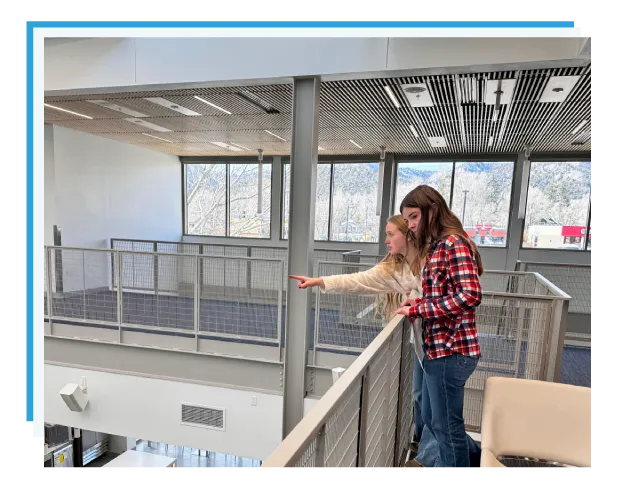
When the day of the grand opening finally arrived, nearly 400 Durango community members saw not only an amazing facility, but a passionate and capable cohort of students. High schoolers greeted visitors and led tours through the building, stopping periodically for student-led demonstrations of different learning pathways offered at Impact. (For example, students from the center’s medical careers pathway showed visitors how to take an echocardiogram.) Throughout the event, culinary students served hors d’oeuvres made from recipes they’d created themselves.
The community loved it. “I saw people come to tears because they were so impressed—and these weren’t even their own kids,” says Sluis. “People want to see kids thriving.” Of course, the event wasn’t perfect, but as she points out, it didn’t need to be. “Frankly, the public would much rather see young people being genuinely excited about their career pathways than a polished district professional saying everything perfectly,” she says.
This November, Durango will have an even bigger bond measure on the ballot, worth $150 million. The grand opening of Impact—and the student learning it showcased—serve as proof that the district is worth the investment. “You have to recognize how enthusiastic students are and how much they want to own their learning—and on the flip side, how powerful it is for learning to be on display for community members,” says Sluis. “Once you recognize the why of incorporating students, I think that motivates you to take the risk.”
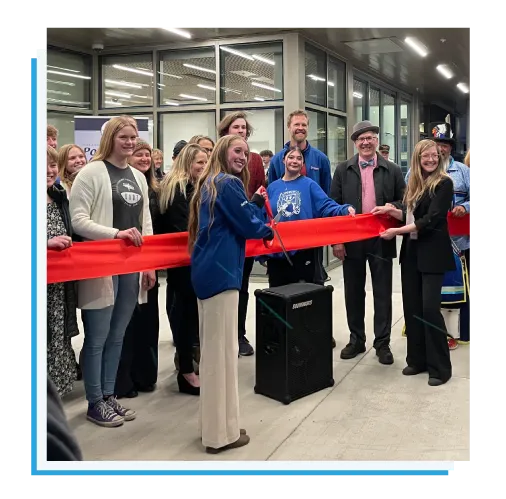
You get to connect with kids.
If you typically work in the central office, letting students help with communications and marketing offers one more benefit: the chance to develop closer relationships with kids. “We’re not teachers. We don’t have that connection that the teachers get on a day-to-day basis,” says Foran. “But working with the kids and DCI is by far the best part of my job. Their enthusiasm and their energy is just unmatched.”
At Copenhagen, Zehr feels much the same. “As the tech director, I’m usually handling more of the nuts and bolts—phones and computers and Chromebooks, all that kind of stuff,” he tells us. “But at 10:30 every morning, I get to go and do the news with the kids. That’s a lot of fun.”
Like we’ve said, it’s important for your community to see an authentic view of life in your schools—but it’s also important for you to get that authentic view, whether you’re an administrator or a communicator. The better you know your students, the better you’ll be able to serve and support them. So if you’re considering making students part of your school communications strategy, why not start now? Chances are, everyone will learn something—the students, the community, and even you. Allow yourself to be inspired by your students. The rest of your audience is sure to follow suit.


